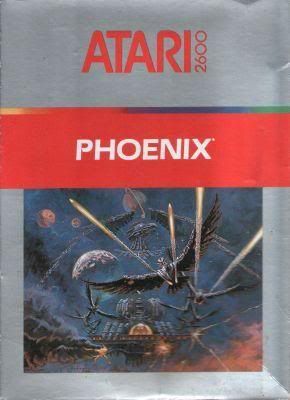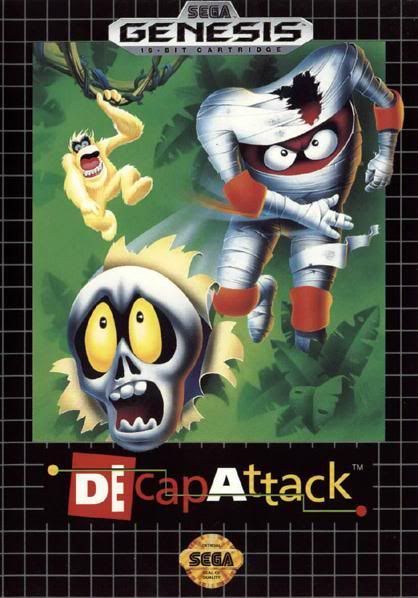I'D BUY THAT FOR A DOLLAR Edition.
All five games in today's group are older titles I played for the first time years after they were made, either as very late purchases or in collections. In one case I played a game three full decades after its' release!
Let's get this wagon train a-rolling.
 70: Sonic CD
70: Sonic CDGenre: Platformer
System: Sega CD
Developer: Sonic Team
Publisher: Sega
Released: November 19, 1993
Sonic CD is the "lost" Sonic game of the 2D hedgehog-themed platformers due to being released on an obscure, failed system rather than coming out on Genesis. Thankfully, this long-standing issue was finally solved when Sonic Gems Collection released for GameCube, providing many (but sadly far from all) of Sonic's more obscure games from the pre-Adventure era. Sonic CD was by far the best Sonic game on the disc, and although there are some strange changes and omissions compared to the Genesis series, it's still fun, albeit slightly less fun. Freeing flowers instead of flickies feels less satisfying, and the reliable spindash is replaced with a "peel-out" maneuver that doesn't protect against incoming enemies. There's also the bizarre level design, with some rings in inaccessible places, and others seemingly scattered about at random unlike the neat clumps of the Genesis. The bosses are also a bit lackluster, taking far fewer than eight hits to beat (and some aren't even fights at all). The Tidal Tempest and final bosses are the best of the group. There's also the much-beloved Metal Sonic "fight", which is actually just a race with obstacles. I was disappointed you never fought Metal Sonic.
There's also the time travel gimmick, which adds some exploration to the proceedings, along with the usual emerald hunt (No Super Sonic here). And lest we forget the completely batshit insane hidden messages tucked away in the disc that only appear if you enter secret codes in the sound test.
This is canon. Yes, Robotnik, you can kick it.
Sonic CD is a good game, but I prefer the Genesis platformers. You'll be seeing some of them later.
 69: Phoenix
69: PhoenixGenre: Shmup
System: Atari 2600
Developer: Atari
Publisher: Atari
Released: 1982
The glory days of the Atari 2600 were an interesting time. One of my favorite things about the period is developers making a really simple video game and then slapping a ridiculously nonsensical epic story that has nothing to do with the gameplay at all to it. A story you wouldn't even know about if not for the manual, because there wasn't any room on the cartridge for anything but a very basic game.
Phoenix is just such a game. This simple Galaga-like shmup has a backstory of an alien virus infecting the Earth's native population of phoenixes (yes, the mythical bird). It's up to you to fight through wave after wave of possessed alien cyborg laser phoenixes and make your way to the alien commander controlling them.
Phoenix is surprisingly advanced for such an old game. It has five levels it repeats endlessly. The first two are quick battles against small flocks of Phoenixes (Inexplicably, you are given a rapid fire ability in Stage 2 and only Stage 2). Stages three and four feature larger, tougher phoenixes. You can shoot their wings to weaken them, but only a body shot will kill them. The fifth level is a boss fight - one of video gaming's first ever bosses! The boss in question is the alien commander. He only takes one shot to kill, but his ship provides a ton of protection, so you need to chew through its' armor first. He also blankets the ground in bullets to try and keep you from getting to him. If you kill him, the game loops back to the first stage and the difficulty rises slightly.
On top of all these improvements and enhancements to the basic Space Invaders/Galaxian theme, your ship has one last ability - if you're about to get shot, pressing down on the joystick locks your ship in place and activates a force-field that is impervious to enemy attack, and any Phoenixes attempting to ram you will crumple against it. The downside is that you cannot move while under the shield's effects, and after it wears off you must recharge it for several seconds before being allowed another use. Lots of strategic potential here.
By the way, I didn't include Galaga on this list, but it too is a good classic shmup with its own set of enhancements to the old formula, so I endorse that much more famous game as well.
 68: Smash TV
68: Smash TVGenre: Shmup
System: Arcade
Developer: Midway
Publisher: Midway
Released: 1990
BIG MONEY, BIG PRIZES, I LOVE IT!
Smash TV is goddamn hilarious. It takes the dark, horrifying plot of The Running Man and makes it into a ludicrous arcade game where a single man (or two men if you're playing two-player) shoots literally thousands of enemies to win literally hundreds of toasters and VCRs. Every so often the Guy Smiley-esque host pops up in the corner with supermodels on each arm, spouting off nuggets of wisdom like "GOOD LUCK! YOU'LL NEED IT!". If you so much as gently brush against an enemy you will die, and there are mines in the floor that cause gibs to fly everywhere. The bosses take more punishment than any other boss I have ever fought, and the difficulty is sky-high, Good thing, then, that in the compilation disc you can play this on (Midway Arcade Treasures 1), continues are infinite!
Smash TV borrows gameplay and controls from the classic Robotron 2084, adding a large host of new features like co-op play, boss fights, a soundtrack, and of course the new game show theme. If you have a friend to play with, you two will spend a good hour laughing your asses off at the insanity on display in Smash TV.
 67: DecapAttack
67: DecapAttackGenre: Platformer
System: Sega Genesis
Developer: Vic Tokai
Publisher: Sega
Released: 1991
In 1990, a platformer came out in Japan called Magical Hat no Buttobi Tabo Daiboken, based upon an anime called Magical Hat. This game had gameplay based heavily on the NES game Kid Kool and the Master System game Psycho Fox, all of which were made by Vic Tokai.
Now, Vic Tokai wanted to release Magical Hat in other countries like they had their older games, but Magical Hat had never aired outside of Japan. In order to make the game accessible (and legal), Vic Tokai completely overhauled everything except the game engine and gameplay, giving us new graphics, sounds, characters, and levels. The result was DecapAttack, in which you play as Chuck D. Head, a two-headed mummy. His main head is in his chest, and if he finds his second head (which sits atop his shoulders like most heads do) he can throw it like a boomerang.
DecapAttack is one of my favorite Halloween-themed games, and I appreciate the westernization not only for the new theme but also for a sharp decrease in difficulty - in Magical Hat, you die if you're hit just once. Here, you have a life meter and can take up to eight hits depending on your settings and if you find the bonus health upgrade halfway through the game. It's not a cakewalk, though, especially if you opt out of using the many potion powerups that can be collected throughout the seven worlds. DecapAttack also offers a surprisingly catchy soundtrack and fun sound effects.
Like Chuck Rock before him, Chuck D. Head got a UK comic series based on his universe. Guess the British really like making comics about old Sega Genesis platform heroes named Chuck.
 66: Kirby's Dreamland 3
66: Kirby's Dreamland 3Genre: Platformer
System: Super Nintendo
Developer: HAL Laboratory
Publisher: Nintendo
Released: November 27, 1997
Talk about a late arrival! The Nintendo 64 had been out for more than a year before Kirby's Dreamland 3 showed up on its' father system.
Still faster than Kirby's Adventure on NES.
Kirby continued his tradition of being late to the party with a very unique platformer. The scribbly, sketchy graphics are very appealing and high-quality, and the light and fun soundtrack is a great backdrop to the action. As is tradition for Kirby, beating this game isn't too hard but getting 100% is a serious undertaking. Making this one especially rough are the mini-quests that must be completed in every stage - to earn the true final boss fight, you must complete every last quest, and some are far from obvious (You'll hear a jingle when something related to the quest first appears on screen, but that's it). No instructions of any sort are provided, so if you don't know what you're supposed to do you'll need to hit up GameFAQs. Missions run the gamut from winning minigames to bringing the right ability to the right situation to fetch quests to build ROB.
Also did I mention you can fight Metroids? Because you totally fight Metroids. In a Kirby game. And Samus makes an appearance. It's quite the thing.



Oh man. KDL3 is my favorite Kirby game. Its a bit weird with its gimmicks, but I love trial and error tactics like that. Most of it was just intuition: Don't step on the flowers, fight a miniboss to rescue someone's friend/child, and...sculpt out a glass out of star blocks?
ReplyDeleteGetting 100% is still hard, thanks to the bloody mini game trials AND the boss butch, though. Love the animal buddies, though.
Lovin this series. Keep at it!